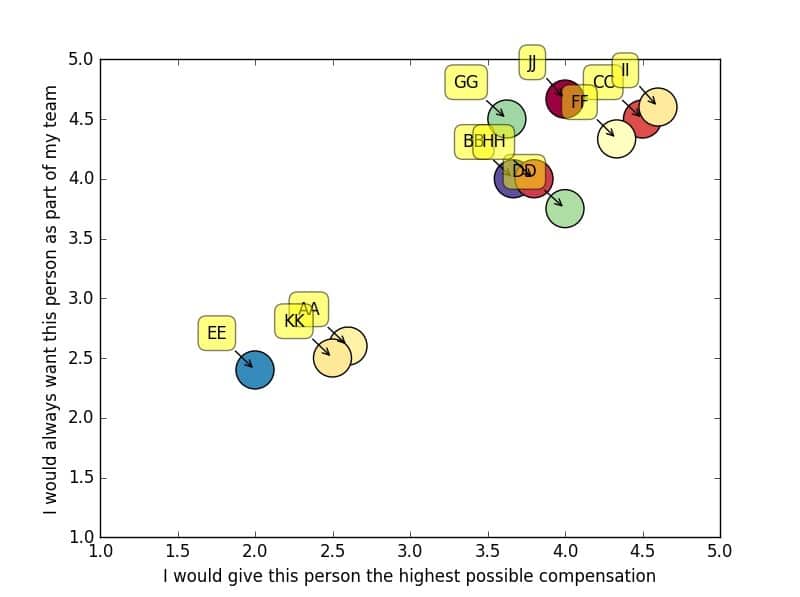Performance management is one of the hardest and most complained about corporate processes. Managers dread the amount of work needed and team members dread the feedback sessions and the uncertainty if they will be treated fairly.
My sense after talking to managers across many organisations is that we do performance management for the sake of performance management. It is entrenched in organisation-wide bureaucratic processes that are based on rule-based systems. At the end of the performance cycle managers feel that they won a Pyrrhic victory. They can tick the box that they have finally completed the performance management process. But at what cost? Deloitte reported that that they spend two million hours on their performance management process. Maybe it should not be this way.
State of the Nation
A series of Washington Post articles echo this sentiment. Managers and team members are complaining.
To date 10% of Fortune 500 companies have done away with performance ratings (Washington Post, 2015). Clearly they are also questioning the value of the process. A recent study found that nearly every single person hates performance reviews (Washington Post, 2014).
Performance reviews often focus on improvement. This has a huge cognitive impact on employees. Research has shown that when a person's status gets threatened, for example when his areas of improvement are pointed out in a performance review, brain activity diminishes in certain areas of the brain. So now even creativity is sacrificed on the altar of performance management (Washington Post, 2013).
Even more concerning is that Corporate Executive Board (CEB Inc.) research found that two-thirds of employees who receive the highest scores in a typical performance management system are not actually the organization’s highest performers. Managers also told CEB that conventional reviews only generate a 3- to 5-percent improvement in employee performance (Washington Post, 2013) .
McKinsey is going even one step further. They argue that because the top 10 to 20 percent of employees make particularly outsize contributions in companies, it is not worth the time to make small distinctions in pay for average performers. To quote the learned consultants: "For those who meet expectations but are not exceptional, attempts to determine who is a shade better or worse yield meaningless information for managers and do little to improve performance" (McKinsey, 2016).
Our proposal
If we look at the previous section things are not well with Performance Management. It is also clear that there is no consensus on what the right approach is. Some companies ditch performance reviews, others tweak them, some focus on strengths and others on how one can improve performance. Research has not reached consensus on an approach yet. With this in mind we do not propose we have the answer. We have a couple of experiments running and we are drawing conclusions from them. Proceed with caution.
During the last year we have piloted two approaches to performance management and the results are encouraging. The “Setting objectives” suggestion was piloted by Cheryl Garwood and the second suggestion on measurement is our adaptation of an HBR article by Marcus Buckingham and Ashley Goodall called Reinventing Performance Management.
Suggestion 1: How to set objectives

Goal setting is a critical part of our performance management strategy.
We need to ensure that our department is aligned to the overall strategy of our organisation and also that the individual team roughly aligns to the direction the department wants to take without sacrificing autonomy.
The way we do it is by going away twice a year as a leadership team and talking about our objectives. We also review how we have done against our strategy during the last couple of months. It also serves as a communication and team building session.
We then make sure that the individual objectives in the teams are roughly in sync with the strategy. We do not spend hours and hours cascading strategy.
We use Continuous Improvement and Creating Value as part of the objectives for each individual.
Based on this, the objectives for each individual focus on three things:
- Learning: Develop yourself in order to support the team becoming more effective out there.
- Improving: Contribute towards the ongoing improvement of the work we do in the team.
- Doing: Delivery of value work to a customer.
At the end of each performance cycle we ask the individual what he or she learnt that contributes to his or her individual mastery and also strengthens us as a team. We also ask each team member what work process(es) they improved that benefited the team. The last question focuses on value work.
Suggestion 2: How to measure

The question around the "Doing" side of the objectives is: How do we measure value? We adapted the Performance Management model of Marcus Buckingham and Ashley Goodall. We liked the approach because it is simple and future focused. The admin around it is also very little. We begin by asking the clients of each individual 5 questions:
- Given what I know of this person’s performance, and if it were my money, I would award this person the highest possible compensation increase and bonus [measures overall performance and unique value to the organization on a five-point scale from “strongly agree” to “strongly disagree”].
- Given what I know of this person’s performance, I would always want him or her on my team [measures ability to work well with others on the same five-point scale].
- This person is at risk for low performance [identifies problems that might harm the customer or the team on a yes-or-no basis].
- This person is ready for promotion today [measures potential on a yes-or-no basis].
- Are there any behaviours that might be tripping the person up at becoming better in the service they provide to you? [Helps with qualitative feedback during an appraisal session]
We changed the model as originally published in two ways. Firstly, we didn’t only ask the team leader for feedback but all the customers the individual has provided a service to. Secondly we asked the question around what might be tripping up performance. We might change this to something like “What should a team member do more of to get better?” in future.
The sample graph below shows some analytics that a team lead can use to evaluate comparative performance.

Our findings so far
We have piloted the measurement model during two appraisal cycles. There is a general view that it works for both the manager and the person being appraised. The amount of paperwork and hours spent on gathering feedback has dramatically reduced. The linking to the value the appraisee gives to the organisation is also very clear. We will continue working on the model and measure the feedback from our employees.
Please share your or your organisation's views on performance management. We would love to know your experience.




Excellent and to the point. better even with as little non value adding admin as possible. The feedback is sincere and leads the individual to evaluate the feedback by themselves and conclude to improve performance where they admin their improvement areas themselves. The entire team is equally evaluated with a focus on team improvement and delivery to the customer. Well done.
A further suggestion is that this remain very transparent – even if the team member pints his/her feedback chart and keep it on hand to actively work towards the top right hand corner with the rest of the team mates.